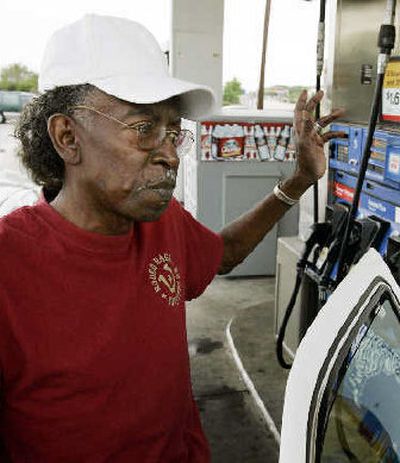Rising gas prices leave many budgets running on empty

For most Americans, today’s rising gasoline prices are an annoyance, not a serious financial hardship.
Then there are people like Kenneth and Edith Taylor of Baltimore, who already struggle to make their monthly social security checks of less than $1,700 last by cooking casseroles and soups at home instead of eating out and forgoing new clothes for as long as possible. Now, with neighborhood pump prices averaging $2.85 a gallon, the Taylors say they simply cannot afford the 80-mile roundtrip to visit their daughter more than once a month.
“There and back is $10 worth of gasoline,” said 84-year-old Kenneth, who used to make the trip in his Buick LeSabre at least every other week.
The Taylor family’s increasing frugality may be a drop in the bucket for the world’s most voracious energy-consuming nation, but it is not inconsequential and could be the start of a broader trend.
Recent government and industry data show that America’s consumption of gasoline is not rising as rapidly as it was this time last year, and analysts say families living on fixed or modest incomes usually are the first to cut back. If prices continue to rise, other demographic groups expected to trim their gasoline consumption are young adults, who tend to have less pocket change than their elders, and people living in rural parts of Texas and Wyoming, where long drives are a routine part of life.
Jim Magagna, a sheep rancher and the executive vice president of the Wyoming Stock Growers Association, said it requires a lot of transportation fuel to manage crops and livestock, and that makes it difficult to significantly curtail consumption on a day-to-day basis. However, ranchers he knows are finding ways to scrimp, for example, using four-wheel all-terrain vehicles instead of pickup trucks to get around their properties.
And because most ranchers live 30 miles or more from the closest grocery, drug store or bank, “they may make one trip to town per week instead of two,” said Magagna.
If there is going to be any significant decline in energy prices this year, “it is going to start with softening demand,” said Peter Beutel, president of Cameron Hanover Inc., an energy market advisory firm based in New Canaan, Conn.
A.G. Edwards & Sons commodities analyst Bill O’Grady explained that because of constraints in oil production and refining “very small increases in demand bring about outsized gains in prices. Likewise, a very small drop in demand would have a similar but opposite impact. That’s the part that’s going to surprise people.”
So far, though, the evidence points to only a miniscule shift in behavior nationwide, and no deceleration in prices.
Wachovia Corp. economist Jason Schenker said he expects the most price-sensitive Americans to continue cutting back on gasoline where they can, and that their spending on other goods is also likely taper off. However, this should only be felt at the margins of total economic growth, which will remain steady at about 3.5 percent in 2006, he said, because employment and wages are rising.
But corporate America is responding. Wal-Mart Stores Inc., the nation’s largest retailer, warned earlier this week that it expected reduced sales throughout 2006 from its least wealthy customers, and the company highlighted its strategy to market more higher-end goods to maintain growth. And after reporting a $92 million first-quarter loss, AMR Corp.’s American Airlines, the country’s largest carrier, said it would mothball 27 of its most inefficient aircraft.
The Energy Department released data this week showing that average daily gasoline demand since the beginning of the year rose 0.9 percent. That compares with an increase of 1.4 percent during the same period last year.